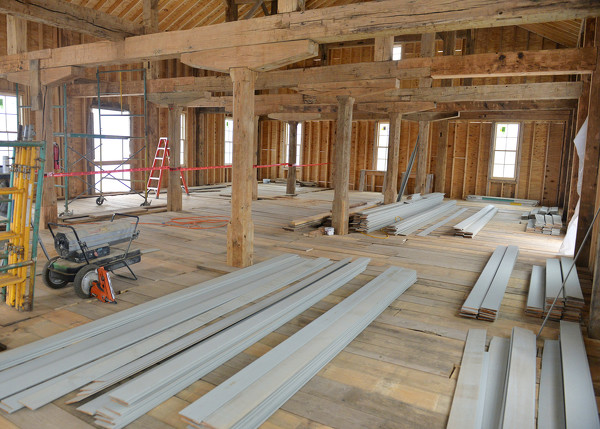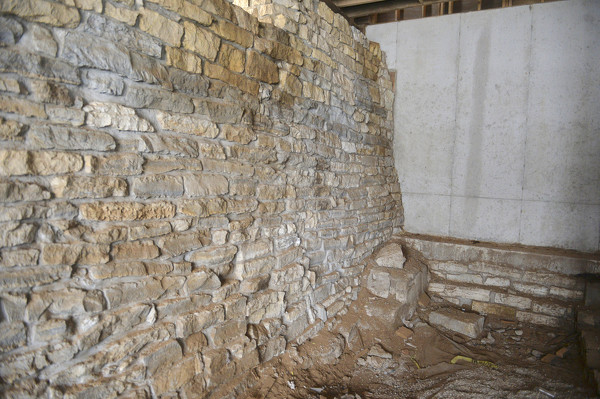
Phase 1 of the rehabilitation and preservation of the reservoir mill on the Miami-Erie Canal in St. Marys should be complete in January.
ST. MARYS - As the year winds to a close, so too does the first phase of the High Street reservoir mill renovation project.
Officials said the building is already getting interest from private groups despite Phase 2 not yet having a set timeline.
The property has seen drastic changes since restoration work began around the start of the year. The first phase focused on stripping away modifications and additions to restore and stabilize the original foundation and frame of the structure, originally built between 1846-1847. At times, the structure was so bare people could see straight through it.
The building - at least its exterior - has since been transformed. Where loose sheet metal siding and concrete additions were once tacked onto the building, a basic but brightened structure now stands. The interior is not finished, as the first phase focused largely on the exterior, but even that has been cleaned up some.
The city received permission to use $1 million from a $1.4 million state revolving loan fund aimed at relieving slum and blight conditions for the project.

RCS Construction workers have finished gutting and have saved much of the original wood framing and pillars from the reservoir mill on the Miami-Erie Canal in St. Marys.
Officials have said crews have salvaged any reusable parts and materials from the original structure, which has been placed on the Nation Register of Historic Places. Due to requirements from the Ohio History Connection to keep the building accurate, the city was also required to use the same species of wood originally used in the building, such as hardwood trees that once thrived in the area.
Officials had planned to tackle interior work in the project's second phase but have not released a timeline or solid cost estimate for its completion. City safety service director Greg Foxhoven had previously predicted the second phase would likely be funded largely through private contributions along with some state funding or revolving loans.
Uses for the building after its completion are still up in the air. At times, officials have spoken of businesses moving in and other times a community center. More recently, though, officials reportedly have received some interest from private parties looking to start a business there.

The original framing of the mill was left visible as new windows and wall framing are added in phase 1 of the rehabilitation and preservation project.
The city had recently been approached by interested business owners looking to use the mill, but officials were still discussing the logistics surrounding any interior improvements that would need to be made, Foxhoven said.
As recently as November, officials learned they would not be able to sell the property but would instead need to lease it to any potential business owners. They would have to reach an agreement on which interior improvements would ultimately be the city's responsibility and which would be the tenant's.
No money is included in the city's 2021 budget for phase two of the restoration, which would include installing electrical, water and plumbing systems. City officials' main concern remains getting through the first phase, Foxhoven has said. After that, they could regroup and further discuss the building's future.
"No matter what, whoever takes it over or whatever we do with it, you're going to need plumbing, you're going to need heating, electric and bathrooms," Foxhoven said.
Officials are reportedly moving as quickly as they can on the project, and Foxhoven said he's not worried the pace would drive away interested parties.
"There is some significant interest, and I think very viable interest, in the mill," Foxhoven said.
City council's approval would be required to fund any phase 2 restoration efforts. Officials would also need to keep in mind the need to maintain the historical integrity of the building.

St. Marys Mayor Patrick McGowan views the lower level of the reservoir mill recently as construction continues on Phase 1 of the rehabilitation and preservation of the building beside the Miami-Erie Canal on High Street.

RCS Construction employees are raising the floor on the third level of the mill.

This gap is the opening between the gear room in the lower level of the reservoir mill and the waterwheel of the mill in St. Marys.

The original stone foundation of the reservoir mill has been cleaned up and is clearly visible.

